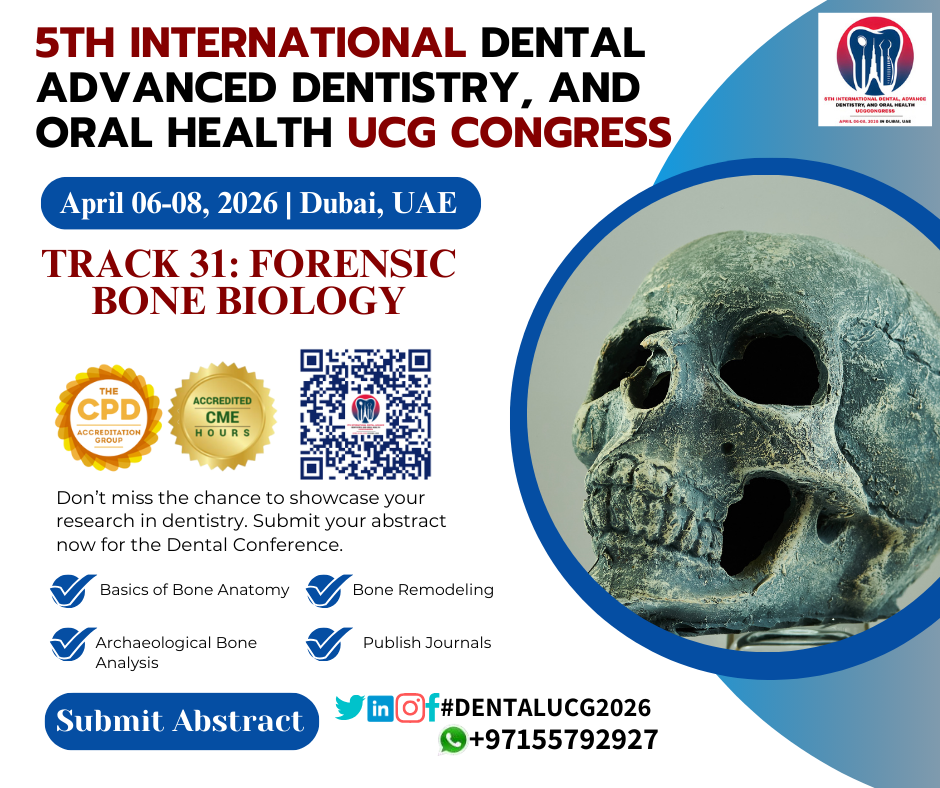1. Introduction to Forensic Bone Biology
- Definition and scope of forensic bone biology
- Role of bones in forensic investigations
- History and development of forensic osteology
2. Bone Structure and Composition
- Anatomy of bones
- Bone composition (organic and inorganic materials)
- Bone development and growth
- Bone remodeling and healing processes
3. Identification of Human Remains
- Determining human vs. non-human remains
- Methods for determining age, sex, ancestry, and stature from bones
- Identifying trauma or disease through bones
- Determining time of death from skeletal remains
4. Age Estimation
- Methods for age estimation from skeletal remains
- Changes in bones due to aging (e.g., dental wear, joint degeneration)
- Age estimation in subadult (juvenile) remains
5. Sex Determination
- Skeletal features that differentiate male and female remains
- Pelvic, cranial, and other skeletal markers
- Challenges in determining sex in certain populations
6. Ancestry Estimation
- Techniques for determining ancestry from skeletal remains
- Cranial and postcranial traits used in ancestry determination
- Challenges with mixed populations
7. Stature Estimation
- Methods for estimating height from skeletal remains
- Use of long bones (femur, tibia, humerus) for stature reconstruction
8. Trauma Analysis
- Types of trauma seen in skeletal remains (e.g., blunt force, sharp force, gunshot wounds)
- Differentiating ante-mortem, peri-mortem, and post-mortem trauma
- Bone healing and interpretation of traumatic injuries
9. Pathology and Diseases in Bones
- Identification of diseases through skeletal analysis (e.g., arthritis, osteoporosis, infections)
- Specific conditions seen in forensic cases (e.g., bone lesions, fractures)
- Effects of trauma and disease on bone structure
10. Forensic Taphonomy
- The study of postmortem changes to the body
- Environmental and biological factors that affect bone preservation
- Decomposition and skeletal remains in different environments
11. Forensic Archaeology and Recovery of Skeletal Remains
- Techniques for locating and recovering skeletal remains
- Excavation methods for skeletal remains
- Chain of custody and preservation of evidence
12. DNA and Genetic Analysis of Bone
- The role of DNA in forensic bone analysis
- Extraction and analysis of DNA from bone tissue
- Challenges in obtaining usable DNA from degraded remains
13. Case Studies and Application of Forensic Bone Biology
- Real-world examples of forensic cases involving bone analysis
- Use of bone biology in criminal investigations and legal proceedings
- Ethical considerations and limitations in forensic bone biology
14. Future Directions in Forensic Bone Biology
- Advances in technology and methods (e.g., 3D imaging, bioinformatics)
- Emerging research and its potential applications in forensics
- The role of interdisciplinary collaboration in advancing forensic bone biology
This is a general outline, and different textbooks or courses may focus more or less on specific areas, depending on the instructor's approach or the current advancements in forensic science.





